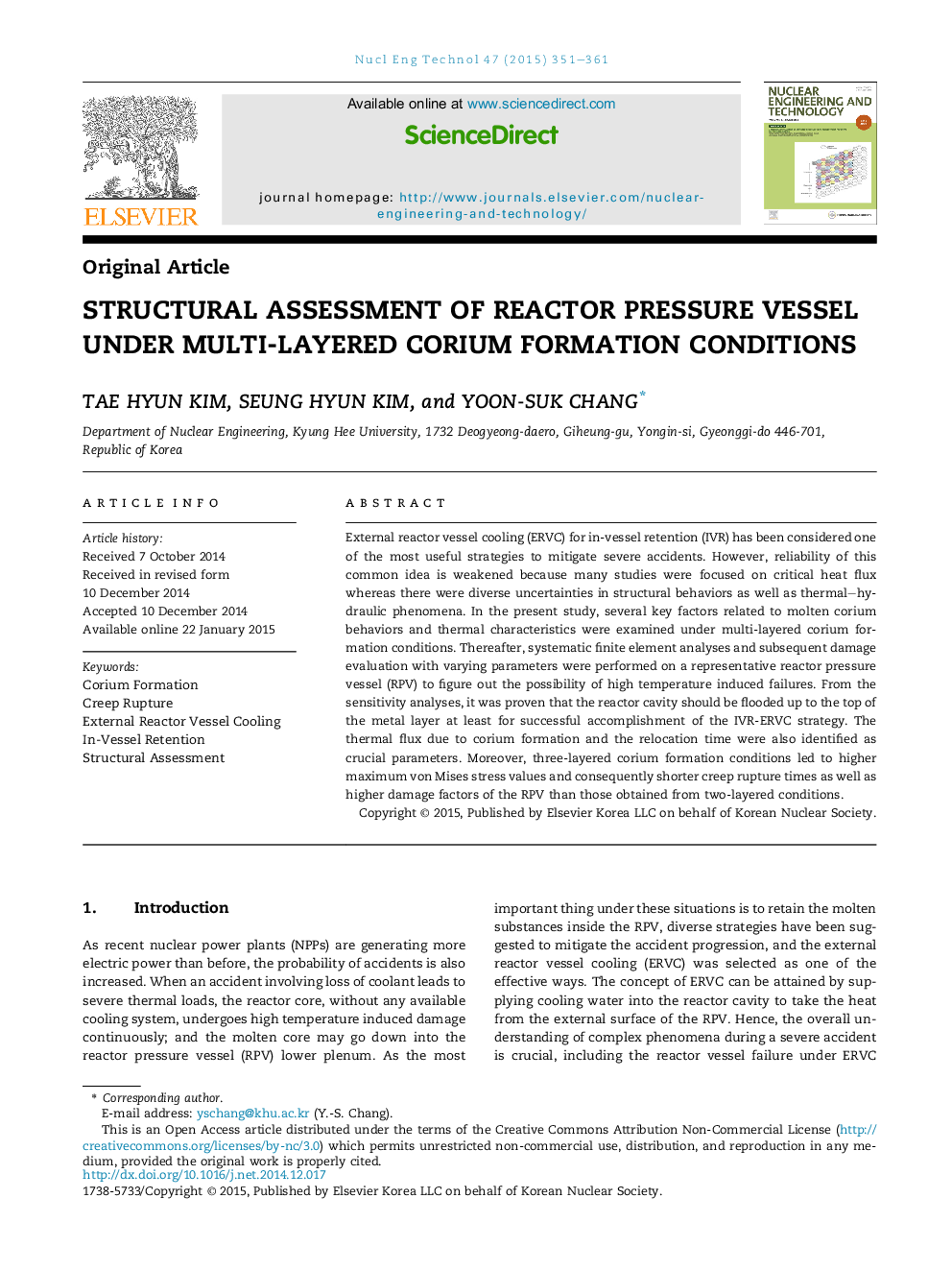| Article ID | Journal | Published Year | Pages | File Type |
|---|---|---|---|---|
| 1740168 | Nuclear Engineering and Technology | 2015 | 11 Pages |
External reactor vessel cooling (ERVC) for in-vessel retention (IVR) has been considered one of the most useful strategies to mitigate severe accidents. However, reliability of this common idea is weakened because many studies were focused on critical heat flux whereas there were diverse uncertainties in structural behaviors as well as thermal–hydraulic phenomena. In the present study, several key factors related to molten corium behaviors and thermal characteristics were examined under multi-layered corium formation conditions. Thereafter, systematic finite element analyses and subsequent damage evaluation with varying parameters were performed on a representative reactor pressure vessel (RPV) to figure out the possibility of high temperature induced failures. From the sensitivity analyses, it was proven that the reactor cavity should be flooded up to the top of the metal layer at least for successful accomplishment of the IVR-ERVC strategy. The thermal flux due to corium formation and the relocation time were also identified as crucial parameters. Moreover, three-layered corium formation conditions led to higher maximum von Mises stress values and consequently shorter creep rupture times as well as higher damage factors of the RPV than those obtained from two-layered conditions.
